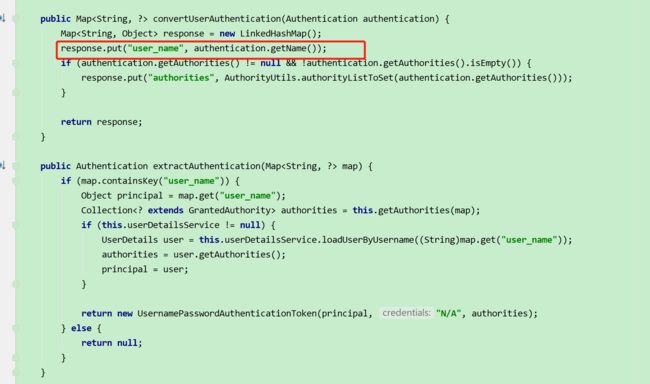- 3.ChatClient&Chat Model简化与AI模型的交互
laopeng301
SpringAI人工智能交互
1.ChatModel对话模型是一种利用人工智能技术,能够生成类似人类对话响应的工具。通过向预训练语言模型(如GPT等)发送提示词或部分对话内容,模型依据自身训练数据及对自然语言模式的理解,生成对话的延续或完整回复,并返回给应用程序。应用程序可以将其呈现给用户或用于进一步处理。SpringAIChatModelAPI设计目标为简单且可移植的接口,用于与各种人工智能模型进行交互,使开发人员能够在不同
- JAVA 18 新特性详解
沉浮yu大海
Java18
Java18是Java语言的一次重要更新,引入了一系列新特性和改进,使开发者能够编写更高效、更安全的代码。本文将详细介绍Java18中的一些主要新特性,并提供相应的代码示例,以帮助开发者更好地理解和使用这些新特性。1.简介Java18的发布标志着Java语言在性能、安全性和开发效率方面的又一次飞跃。本次更新不仅带来了新的语言特性,还包括了一些实验性功能和工具的改进。下面,我们将依次介绍这些新特性。
- 使用Docker部署一个使用PostgreSQL数据库的Springboot项目
youtian.L
Docker系列教程数据库dockerspringbootjava容器
1-我们将建造什么?出于演示目的,我们将创建一个简单的食谱管理应用程序,其中包含两个实体:Chef和Recipe。编辑2-创建一个springboot应用程序为此,如果您使用IntelliJidea.并选择以下依赖项:SpringWeb,PostgreSQLDriver当然SpringDataJPA还要确保选择maven作为项目经理。编辑安装项目后,将其解压缩并使用您喜欢的IDE打开它。如第一部分
- Golang面试题四(并发编程)
os-lee
go高级golang开发语言后端
目录1.Go常见的并发模型2.哪些方法安全读写共享变量3.如何排查数据竞争问题4.Go有哪些同步原语1.Mutex(互斥锁)2.RWMutex(读写互斥锁)3.Atomic3.1.使用场景3.2.整型操作3.3.指针操作3.4.使用示例4.Channel使用场景使用示例5.sync.WaitGroup使用场景使用示例内部结构关键方法源码解析内部实现细节6.sync.Once使用场景使用示例实现原理
- WebClient和RestTemplate的差异
master_chenchengg
能力提升面试宝典技术IT信息化
WebClient和RestTemplate的差异引言RestTemplate的历史背景与适用场景WebClient的诞生背景及其优势编程模型对比错误处理机制的区别性能考量未来发展方向实际应用案例分享引言在当今互联网时代,服务间的通信是构建分布式系统不可或缺的一部分。Spring框架作为Java生态系统中最受欢迎的企业级开发框架之一,提供了多种工具来简化HTTP请求的处理。其中,WebClient
- WebSocket 安全实践:从认证到加密
在前三篇文章中,我们深入探讨了WebSocket的基础原理、服务端开发和客户端实现。今天,让我们把重点放在安全性上,看看如何构建一个安全可靠的WebSocket应用。我曾在一个金融项目中,通过实施多层安全机制,成功防御了多次恶意攻击尝试。安全挑战WebSocket应用面临的主要安全挑战包括:身份认证数据加密跨站点WebSocket劫持(CSWSH)拒绝服务攻击(DoS)中间人攻击让我们逐一解决这些
- 智能合约安全之重入攻击
概述重入攻击(ReentrancyAttack)是一种常见的智能合约安全漏洞,指黑客利用合约中存在的逻辑漏洞,在调用合约函数时,利用合约逻辑漏洞,反复调用合约的函数,并利用这种递归调用的机制,以欺骗合约的计算,从而使攻击者获得非法利益。重入攻击的本质是合约内部调用的函数未能恰当地处理合约状态的更改。攻击者利用这个漏洞,将攻击代码插入到合约执行流程中,使得攻击者可以在合约还未完成之前再次调用某个函数
- 【openGauss】数据库安全-数据库认证机制
小嗑数据库
数据库开源软件
数据库认证机制可获得性本特性自openGauss1.1.0版本开始引入。特性简介提供基于客户端/服务端(C/S)模式的客户端连接认证机制。客户价值加密认证过程中采用单向Hash不可逆加密算法PBKDF2,有效防止彩虹攻击。特性描述openGauss采用基本的客户端连接认证机制,客户端发起连接请求后,由服务端完成信息校验并依据校验结果发送认证所需信息给客户端(认证信息包括盐值、token以及服务端签
- 《智守数据堡垒——AI驱动的MySQL数据治理合规框架》
墨夶
数据库学习资料2人工智能mysql数据库
在当今数字化转型加速的时代,企业面临着前所未有的数据挑战。一方面,海量的数据为企业带来了巨大的商业价值;另一方面,如何确保这些数据的安全性、一致性和合法性成为了亟待解决的问题。尤其是在金融、医疗等高度监管行业中,任何数据泄露或不当使用都可能导致严重的法律后果和社会影响。为此,构建一个既高效又能满足法律法规要求的数据治理体系显得尤为重要。今天,我们将探讨一种创新性的解决方案——利用人工智能(AI)技
- 【spring boot统一功能处理】拦截器
一只淡水鱼66
JavaEEspringbootjava后端拦截器
拦截器在SpringBoot中,拦截器(Interceptor)是用于在处理请求前后进行一些自定义操作的组件,常用于日志记录、权限检查、性能监控等。拦截器的使用依赖于HandlerInterceptor接口和WebMvcConfigurer接口。1.HandlerInterceptor接口HandlerInterceptor接口是SpringMVC中用来定义拦截器的核心接口。它有三个方法需要实现:
- 麒麟操作系统服务架构保姆级教程(十一)https配置
小屁不止是运维
系统架构架构https网络协议linux运维LNMP服务器
如果你想拥有你从未拥有过的东西,那么你必须去做你从未做过的事情在运维工作中,加密和安全的作用是十分重要的,如果仅仅用http协议来对外展示我们的网站,过一段时间就会发现网站首页被人奇奇怪怪的篡改了,本来好好的博客论坛,被人篡改的五毒俱全,这个时候我们的网站就需要加密访问了,这个加密不是说要密码才可以查看网站,而是通过https协议进行加密访问,客户端进行访问的时候会进行加密和解密,防止我们的web
- 基于SIFT特征提取和模板匹配的车标识别算法MATLAB仿真(含MATLAB代码)
爱学习的通信人
图像处理毕业设计信号处理算法matlab开发语言
摘要本文介绍了一种基于尺度不变特征变换(SIFT)特征提取和模板匹配的车标识别方法,并通过MATLAB进行仿真。该方法利用SIFT特征的尺度和旋转不变性,提高车标识别的准确性和鲁棒性,适用于各种尺寸和方向的车标图像。仿真结果展示了该方法在实际应用中的有效性。关键词:车标识别,SIFT特征提取,模板匹配,MATLAB仿真1.引言车标识别在车辆检测、智能交通系统和安全监控中具有重要应用。准确识别车辆品
- SpringBoot整合Logback日志框架
洛上言
后端springboot后端java
文章目录一、引入二、默认日志格式三、控制台输出四、文件输出五、日志级别六、日志组七、自定义日志格式八、自定义log配置九、logback-spring.xml自定义注意事项一、引入SpringBoot使用CommonsLogging进行所有内部日志的记录,但默认配置也提供了对常用日志的支持,如JavaUtilLogging,Log4J2,和Logback.每种logger都可以通过配置使用控制台或
- Java 基础之泛型:类型安全的保障与灵活运用
幽兰的天空
Java基础启航:从零到小有所成开发语言java
在Java编程的世界里,泛型是一个至关重要且非常实用的特性。它在Java5中被引入,从根本上改变了我们处理数据类型的方式,提供了更强的类型安全保障,同时也增加了代码的复用性和可读性。一、什么是泛型泛型(Generics)简单来说,就是允许在定义类、接口和方法时使用类型参数。这些类型参数在使用时会被具体的类型所替代。例如,我们常见的集合类ArrayList就是一个泛型类,它的定义形式是ArrayLi
- Spring 框架中的 Bean 生命周期全解析
码农小灰
面试题Springjavajavaspringservlet
目录一、Bean生命周期的关键步骤二、使用场景说明在当今的软件开发领域,Spring框架凭借其强大的依赖注入和控制反转特性,已成为Java开发中不可或缺的一部分。而Spring框架的核心组件之一——Bean,其生命周期的管理对于应用程序的稳定运行和资源的有效利用至关重要。本文将深入探讨Spring框架中Bean的生命周期,从实例化到销毁的每一个关键步骤,并结合使用场景进行说明,帮助开发者更好地理解
- 【大模型】Spring AI Alibaba 对接百炼平台大模型使用详解
小码农叔叔
AI大模型实战与应用微服务治理与实战springaiSpringAI详解百炼大模型
目录一、前言二、SpringAI概述2.1springai是什么2.2SpringAI核心能力2.3SpringAI应用场景三、SpringAIAlibaba介绍3.1SpringAIAlibaba是什么3.2SpringAIAlibaba核心特点3.3SpringAIAlibaba应用场景四、SpringBoot对接SpringAIAlibaba过程4.1前置准备4.1.1获取apikey4.1
- Spring Boot入门(19):超酷炫!Spring Boot + Thymeleaf 带你玩转 Web 页面开发!
喵手
Springbootspringboot前端后端
前言在Web开发中,不管是MVC框架还是前后端分离,都需要使用模板引擎来渲染生成页面。Thymeleaf是一款非常优秀的模板引擎,它以自然的方式处理模板,支持HTML5标签,同时兼容HTML4。本文将介绍如何使用SpringBoot框架,整合Thymeleaf模板引擎来开发Web页面。摘要本文将分为以下几个部分:新建SpringBoot项目配置Thymeleaf模板引擎编写HTML页面模板引擎使用
- hive 创建访问用户_Hive权限控制和超级管理员的实现
weixin_39826089
hive创建访问用户
Hive权限控制Hive权限机制:Hive从0.10可以通过元数据控制权限。但是Hive的权限控制并不是完全安全的。基本的授权方案的目的是防止用户不小心做了不合适的事情。先决条件:为了使用Hive的授权机制,有两个参数必须在hive-site.xml中设置:hive.security.authorization.enabledtrueenableordisablethehiveclientauth
- 1.Spring AI 从入门到实践
laopeng301
SpringAIspring人工智能java
SpringAI从入门到实践1.什么是SpringAI2.使用SpringBoot&SpringAI快速构建AI应用程序3.ChatClient&ChatModel简化与AI模型的交互4.SpringAIPrompt:与大模型进行有效沟通5.结构化输出大模型响应6.实战:AI聊天机器人Ben技术站关注Java技术,LLM,计算机科学等内容。关注会持续更新推送详细教程内容和源码。
- Spring Boot 3.x- MybatisPlus集成
laopeng301
SpringBoot3.x教程springbootjava后端mysqlspring
系列文章目录系列文章:SpringBoot3.x系列教程文章目录系列文章目录简介一、快速开始1.数据库表和数据准备2.新增项目&导入依赖3.配置4.开发编码5.运行测试二、注解三、测试四、CRUDServiceCRUDMapperCRUD五、完整CRUD例子简介官网介绍:MyBatis-Plus(简称MP)是一个MyBatis的增强工具,在MyBatis的基础上只做增强不做改变,为简化开发、提高效
- JavaWeb合集17-拦截器(Interceptor)和过滤器(Filter)
永恒之月℡
JavaWeb合集1024程序员节javajavaweb过滤器拦截器
十七、拦截器和过滤器在JavaWeb开发中,拦截器(Interceptor)和过滤器(Filter)都是用于在请求处理前后执行某些操作的机制。虽然它们的功能相似,但在实现方式、使用场景和灵活性方面有一些重要的区别。1、拦截器和过滤器的区别及选择1.1拦截器定义:拦截器是Spring框架提供的一个机制,用于在请求处理前后执行某些操作。它基于AOP(面向切面编程)的思想。作用:通常用于处理与业务逻辑相
- Spring 开发必备:深入解析 Spring Bean 的六大作用域
码农技术栈
spring后端微服务springcloudspringboot
SpringBean一共有六种作用域,我们可以将它们比作是不同场景下的“服务助手”。1.单例作用域(Singleton):•就像餐厅里只有一个“领班助手”,无论顾客多少次呼唤,来的都是同一位助手。•在Spring容器中,单例作用域的Bean也只会有一个实例,无论在哪里获取,都是同一个对象。•适用于无状态的Bean,如数据库连接池等。2.原型作用域(Prototype):•就像餐厅里每次顾客呼唤都会
- HTTP 安全:HTTPS 原理与配置
计算机毕设定制辅导-无忧学长
#HTTPhttp安全https
一、引言在当今数字化时代,网络安全至关重要。我们日常上网离不开HTTP协议,但它存在安全隐患。HTTP以明文传输数据,信息易被窃取、篡改,身份也难以验证,像账号密码、交易信息等敏感内容在传输时毫无保障。为解决这些问题,HTTPS应运而生。它在HTTP基础上加入SSL/TLS协议,实现加密传输、身份认证和数据完整性保护,极大提升了网络通信的安全性。无论是电商购物、网上银行转账,还是登录各类账号,HT
- php.ini配置中有10处设置不当,会使网站存在安全问题
瑆箫
php安全开发语言
在php.ini配置文件中,有一些设置如果配置不当,可能会导致网站面临安全风险。PHP的安全性很大程度上依赖于这些配置选项的正确设置。以下是10个可能存在安全问题的PHP配置项,如果配置不当,可能会导致网站存在安全漏洞:1.display_errors问题:启用错误显示时,PHP会将错误信息直接输出到浏览器,这可能会泄露敏感信息(如数据库密码、文件路径等)给攻击者。解决方法:应该禁用错误显示,特别
- 第79期 | GPTSecurity周报
云起无垠
GPTSecurityAIGCgpt
GPTSecurity是一个涵盖了前沿学术研究和实践经验分享的社区,集成了生成预训练Transformer(GPT)、人工智能生成内容(AIGC)以及大语言模型(LLM)等安全领域应用的知识。在这里,您可以找到关于GPT/AIGC/LLM最新的研究论文、博客文章、实用的工具和预设指令(Prompts)。现为了更好地知悉近一周的贡献内容,现总结如下。SecurityPapers1.TrojanWhi
- 第60期 | GPTSecurity周报
云起无垠
GPTSecurity人工智能语言模型网络安全
GPTSecurity是一个涵盖了前沿学术研究和实践经验分享的社区,集成了生成预训练Transformer(GPT)、人工智能生成内容(AIGC)以及大语言模型(LLM)等安全领域应用的知识。在这里,您可以找到关于GPT/AIGC/LLM最新的研究论文、博客文章、实用的工具和预设指令(Prompts)。现为了更好地知悉近一周的贡献内容,现总结如下。SecurityPapers1.映射你的模型:评估
- 《多模态语言模型:一个开放探索的技术新领域》
XianxinMao
语言模型人工智能算法
核心主题多模态语言模型的特点仍处于探索和定义阶段没有固定的标准任务和评估方法研究方向高度开放技术路径主要存在两种方法:后期融合(LateFusion)从语言模型backbone开始添加图像编码器效果稳定,成本可控早期融合(EarlyFusion)从多模态数据集预训练效果尚不明显需要更大规模计算资源开放和透明的重要性促进知识累积和技术迭代降低技术准入门槛避免技术垄断便于安全性审计主要挑战技术层面数据
- 第83期 | GPTSecurity周报
云起无垠
GPTSecurity人工智能网络安全
GPTSecurity是一个涵盖了前沿学术研究和实践经验分享的社区,集成了生成预训练Transformer(GPT)、人工智能生成内容(AIGC)以及大语言模型(LLM)等安全领域应用的知识。在这里,您可以找到关于GPT/AIGC/LLM最新的研究论文、博客文章、实用的工具和预设指令(Prompts)。现为了更好地知悉近一周的贡献内容,现总结如下。SecurityPapers1.混乱中建立秩序:人
- 腾讯cos对象存储,下行流量费贵,是否可以加入服务器减少费用,架构如何设计
iteye_10392
对象存储java
腾讯云COS(CloudObjectStorage)对象存储服务提供了一种高效、安全、低成本的方式存储大量数据。然而,当涉及到外网下行流量时,确实会产生一定的费用,这可能会增加整体的成本。为了减少这些费用,可以通过以下几种方式优化架构设计:1.内网访问内网通信:如果您的应用服务器也在腾讯云上,尽量使用内网IP来访问COS。腾讯云通常不收取内网流量费用,这样可以大大减少成本。VPC互通:确保您的应用
- 记录 io.springfox 3.0.0 整合 spring boot 2.6.x 由于 springfox bug 引发问题
树懒_Zz
Springspringbootbugwindows
首先第一个问题就是不兼容:解决方案:@BeanpublicstaticBeanPostProcessorspringfoxHandlerProviderBeanPostProcessor(){returnnewBeanPostProcessor(){@OverridepublicObjectpostProcessAfterInitialization(Objectbean,StringbeanNa
- Dom
周华华
JavaScripthtml
<!DOCTYPE html PUBLIC "-//W3C//DTD XHTML 1.0 Transitional//EN" "http://www.w3.org/TR/xhtml1/DTD/xhtml1-transitional.dtd">
<html xmlns="http://www.w3.org/1999/xhtml&q
- 【Spark九十六】RDD API之combineByKey
bit1129
spark
1. combineByKey函数的运行机制
RDD提供了很多针对元素类型为(K,V)的API,这些API封装在PairRDDFunctions类中,通过Scala隐式转换使用。这些API实现上是借助于combineByKey实现的。combineByKey函数本身也是RDD开放给Spark开发人员使用的API之一
首先看一下combineByKey的方法说明:
- msyql设置密码报错:ERROR 1372 (HY000): 解决方法详解
daizj
mysql设置密码
MySql给用户设置权限同时指定访问密码时,会提示如下错误:
ERROR 1372 (HY000): Password hash should be a 41-digit hexadecimal number;
问题原因:你输入的密码是明文。不允许这么输入。
解决办法:用select password('你想输入的密码');查询出你的密码对应的字符串,
然后
- 路漫漫其修远兮 吾将上下而求索
周凡杨
学习 思索
王国维在他的《人间词话》中曾经概括了为学的三种境界古今之成大事业、大学问者,罔不经过三种之境界。“昨夜西风凋碧树。独上高楼,望尽天涯路。”此第一境界也。“衣带渐宽终不悔,为伊消得人憔悴。”此第二境界也。“众里寻他千百度,蓦然回首,那人却在灯火阑珊处。”此第三境界也。学习技术,这也是你必须经历的三种境界。第一层境界是说,学习的路是漫漫的,你必须做好充分的思想准备,如果半途而废还不如不要开始。这里,注
- Hadoop(二)对话单的操作
朱辉辉33
hadoop
Debug:
1、
A = LOAD '/user/hue/task.txt' USING PigStorage(' ')
AS (col1,col2,col3);
DUMP A;
//输出结果前几行示例:
(>ggsnPDPRecord(21),,)
(-->recordType(0),,)
(-->networkInitiation(1),,)
- web报表工具FineReport常用函数的用法总结(日期和时间函数)
老A不折腾
finereport报表工具web开发
web报表工具FineReport常用函数的用法总结(日期和时间函数)
说明:凡函数中以日期作为参数因子的,其中日期的形式都必须是yy/mm/dd。而且必须用英文环境下双引号(" ")引用。
DATE
DATE(year,month,day):返回一个表示某一特定日期的系列数。
Year:代表年,可为一到四位数。
Month:代表月份。
- c++ 宏定义中的##操作符
墙头上一根草
C++
#与##在宏定义中的--宏展开 #include <stdio.h> #define f(a,b) a##b #define g(a) #a #define h(a) g(a) int main() { &nbs
- 分析Spring源代码之,DI的实现
aijuans
springDI现源代码
(转)
分析Spring源代码之,DI的实现
2012/1/3 by tony
接着上次的讲,以下这个sample
[java]
view plain
copy
print
- for循环的进化
alxw4616
JavaScript
// for循环的进化
// 菜鸟
for (var i = 0; i < Things.length ; i++) {
// Things[i]
}
// 老鸟
for (var i = 0, len = Things.length; i < len; i++) {
// Things[i]
}
// 大师
for (var i = Things.le
- 网络编程Socket和ServerSocket简单的使用
百合不是茶
网络编程基础IP地址端口
网络编程;TCP/IP协议
网络:实现计算机之间的信息共享,数据资源的交换
协议:数据交换需要遵守的一种协议,按照约定的数据格式等写出去
端口:用于计算机之间的通信
每运行一个程序,系统会分配一个编号给该程序,作为和外界交换数据的唯一标识
0~65535
查看被使用的
- JDK1.5 生产消费者
bijian1013
javathread生产消费者java多线程
ArrayBlockingQueue:
一个由数组支持的有界阻塞队列。此队列按 FIFO(先进先出)原则对元素进行排序。队列的头部 是在队列中存在时间最长的元素。队列的尾部 是在队列中存在时间最短的元素。新元素插入到队列的尾部,队列检索操作则是从队列头部开始获得元素。
ArrayBlockingQueue的常用方法:
- JAVA版身份证获取性别、出生日期及年龄
bijian1013
java性别出生日期年龄
工作中需要根据身份证获取性别、出生日期及年龄,且要还要支持15位长度的身份证号码,网上搜索了一下,经过测试好像多少存在点问题,干脆自已写一个。
CertificateNo.java
package com.bijian.study;
import java.util.Calendar;
import
- 【Java范型六】范型与枚举
bit1129
java
首先,枚举类型的定义不能带有类型参数,所以,不能把枚举类型定义为范型枚举类,例如下面的枚举类定义是有编译错的
public enum EnumGenerics<T> { //编译错,提示枚举不能带有范型参数
OK, ERROR;
public <T> T get(T type) {
return null;
- 【Nginx五】Nginx常用日志格式含义
bit1129
nginx
1. log_format
1.1 log_format指令用于指定日志的格式,格式:
log_format name(格式名称) type(格式样式)
1.2 如下是一个常用的Nginx日志格式:
log_format main '[$time_local]|$request_time|$status|$body_bytes
- Lua 语言 15 分钟快速入门
ronin47
lua 基础
-
-
单行注释
-
-
[[
[多行注释]
-
-
]]
-
-
-
-
-
-
-
-
-
-
-
1.
变量 & 控制流
-
-
-
-
-
-
-
-
-
-
num
=
23
-
-
数字都是双精度
str
=
'aspythonstring'
- java-35.求一个矩阵中最大的二维矩阵 ( 元素和最大 )
bylijinnan
java
the idea is from:
http://blog.csdn.net/zhanxinhang/article/details/6731134
public class MaxSubMatrix {
/**see http://blog.csdn.net/zhanxinhang/article/details/6731134
* Q35
求一个矩阵中最大的二维
- mongoDB文档型数据库特点
开窍的石头
mongoDB文档型数据库特点
MongoDD: 文档型数据库存储的是Bson文档-->json的二进制
特点:内部是执行引擎是js解释器,把文档转成Bson结构,在查询时转换成js对象。
mongoDB传统型数据库对比
传统类型数据库:结构化数据,定好了表结构后每一个内容符合表结构的。也就是说每一行每一列的数据都是一样的
文档型数据库:不用定好数据结构,
- [毕业季节]欢迎广大毕业生加入JAVA程序员的行列
comsci
java
一年一度的毕业季来临了。。。。。。。。
正在投简历的学弟学妹们。。。如果觉得学校推荐的单位和公司不适合自己的兴趣和专业,可以考虑来我们软件行业,做一名职业程序员。。。
软件行业的开发工具中,对初学者最友好的就是JAVA语言了,网络上不仅仅有大量的
- PHP操作Excel – PHPExcel 基本用法详解
cuiyadll
PHPExcel
导出excel属性设置//Include classrequire_once('Classes/PHPExcel.php');require_once('Classes/PHPExcel/Writer/Excel2007.php');$objPHPExcel = new PHPExcel();//Set properties 设置文件属性$objPHPExcel->getProperties
- IBM Webshpere MQ Client User Issue (MCAUSER)
darrenzhu
IBMjmsuserMQMCAUSER
IBM MQ JMS Client去连接远端MQ Server的时候,需要提供User和Password吗?
答案是根据情况而定,取决于所定义的Channel里面的属性Message channel agent user identifier (MCAUSER)的设置。
http://stackoverflow.com/questions/20209429/how-mca-user-i
- 网线的接法
dcj3sjt126com
一、PC连HUB (直连线)A端:(标准568B):白橙,橙,白绿,蓝,白蓝,绿,白棕,棕。 B端:(标准568B):白橙,橙,白绿,蓝,白蓝,绿,白棕,棕。 二、PC连PC (交叉线)A端:(568A): 白绿,绿,白橙,蓝,白蓝,橙,白棕,棕; B端:(标准568B):白橙,橙,白绿,蓝,白蓝,绿,白棕,棕。 三、HUB连HUB&nb
- Vimium插件让键盘党像操作Vim一样操作Chrome
dcj3sjt126com
chromevim
什么是键盘党?
键盘党是指尽可能将所有电脑操作用键盘来完成,而不去动鼠标的人。鼠标应该说是新手们的最爱,很直观,指哪点哪,很听话!不过常常使用电脑的人,如果一直使用鼠标的话,手会发酸,因为操作鼠标的时候,手臂不是在一个自然的状态,臂肌会处于绷紧状态。而使用键盘则双手是放松状态,只有手指在动。而且尽量少的从鼠标移动到键盘来回操作,也省不少事。
在chrome里安装 vimium 插件
- MongoDB查询(2)——数组查询[六]
eksliang
mongodbMongoDB查询数组
MongoDB查询数组
转载请出自出处:http://eksliang.iteye.com/blog/2177292 一、概述
MongoDB查询数组与查询标量值是一样的,例如,有一个水果列表,如下所示:
> db.food.find()
{ "_id" : "001", "fruits" : [ "苹
- cordova读写文件(1)
gundumw100
JavaScriptCordova
使用cordova可以很方便的在手机sdcard中读写文件。
首先需要安装cordova插件:file
命令为:
cordova plugin add org.apache.cordova.file
然后就可以读写文件了,这里我先是写入一个文件,具体的JS代码为:
var datas=null;//datas need write
var directory=&
- HTML5 FormData 进行文件jquery ajax 上传 到又拍云
ileson
jqueryAjaxhtml5FormData
html5 新东西:FormData 可以提交二进制数据。
页面test.html
<!DOCTYPE>
<html>
<head>
<title> formdata file jquery ajax upload</title>
</head>
<body>
<
- swift appearanceWhenContainedIn:(version1.2 xcode6.4)
啸笑天
version
swift1.2中没有oc中对应的方法:
+ (instancetype)appearanceWhenContainedIn:(Class <UIAppearanceContainer>)ContainerClass, ... NS_REQUIRES_NIL_TERMINATION;
解决方法:
在swift项目中新建oc类如下:
#import &
- java实现SMTP邮件服务器
macroli
java编程
电子邮件传递可以由多种协议来实现。目前,在Internet 网上最流行的三种电子邮件协议是SMTP、POP3 和 IMAP,下面分别简单介绍。
◆ SMTP 协议
简单邮件传输协议(Simple Mail Transfer Protocol,SMTP)是一个运行在TCP/IP之上的协议,用它发送和接收电子邮件。SMTP 服务器在默认端口25上监听。SMTP客户使用一组简单的、基于文本的
- mongodb group by having where 查询sql
qiaolevip
每天进步一点点学习永无止境mongo纵观千象
SELECT cust_id,
SUM(price) as total
FROM orders
WHERE status = 'A'
GROUP BY cust_id
HAVING total > 250
db.orders.aggregate( [
{ $match: { status: 'A' } },
{
$group: {
- Struts2 Pojo(六)
Luob.
POJOstrust2
注意:附件中有完整案例
1.采用POJO对象的方法进行赋值和传值
2.web配置
<?xml version="1.0" encoding="UTF-8"?>
<web-app version="2.5"
xmlns="http://java.sun.com/xml/ns/javaee&q
- struts2步骤
wuai
struts
1、添加jar包
2、在web.xml中配置过滤器
<filter>
<filter-name>struts2</filter-name>
<filter-class>org.apache.st


